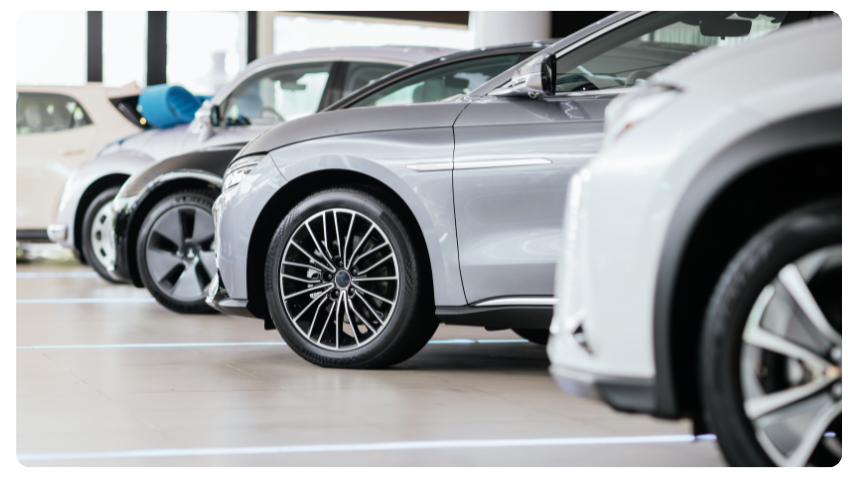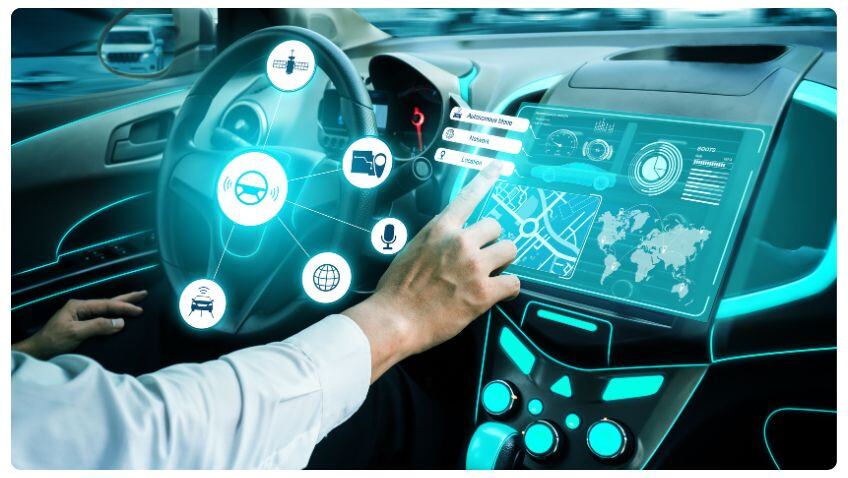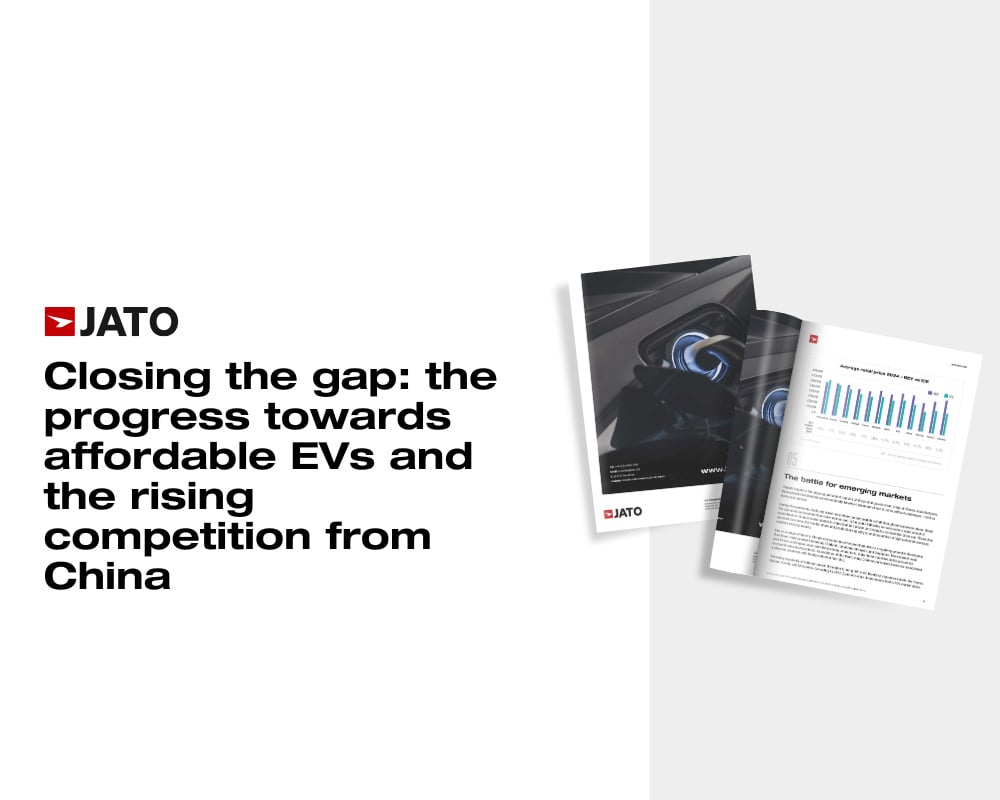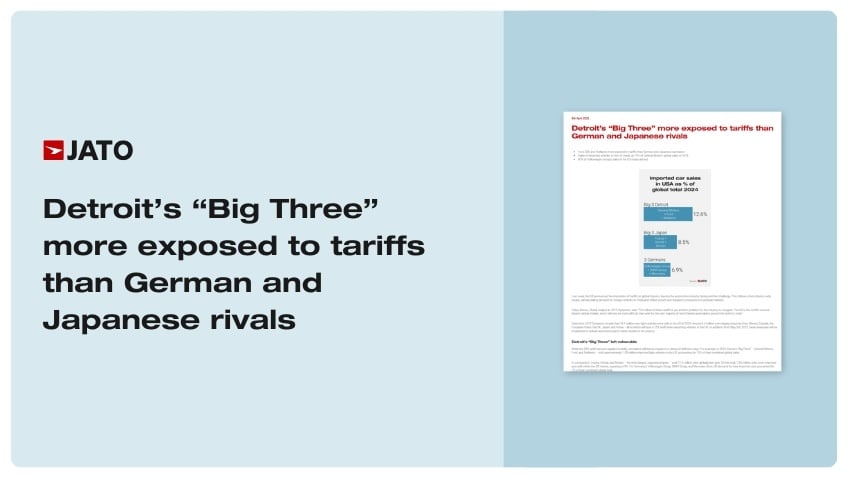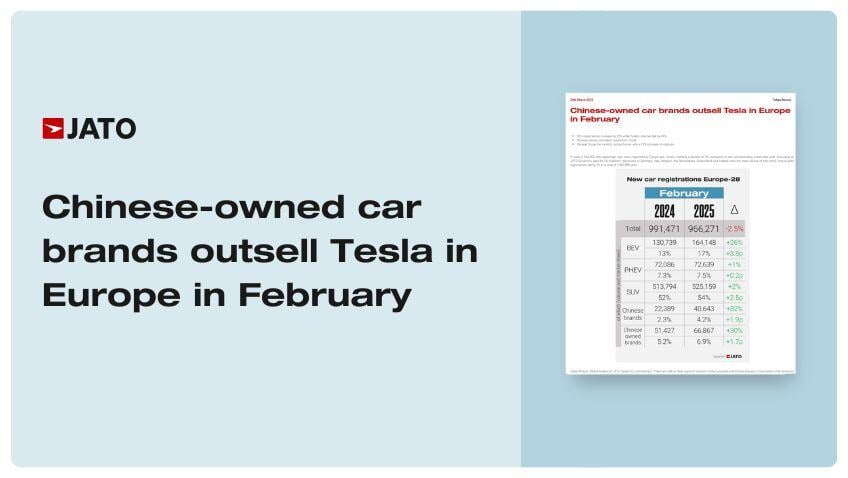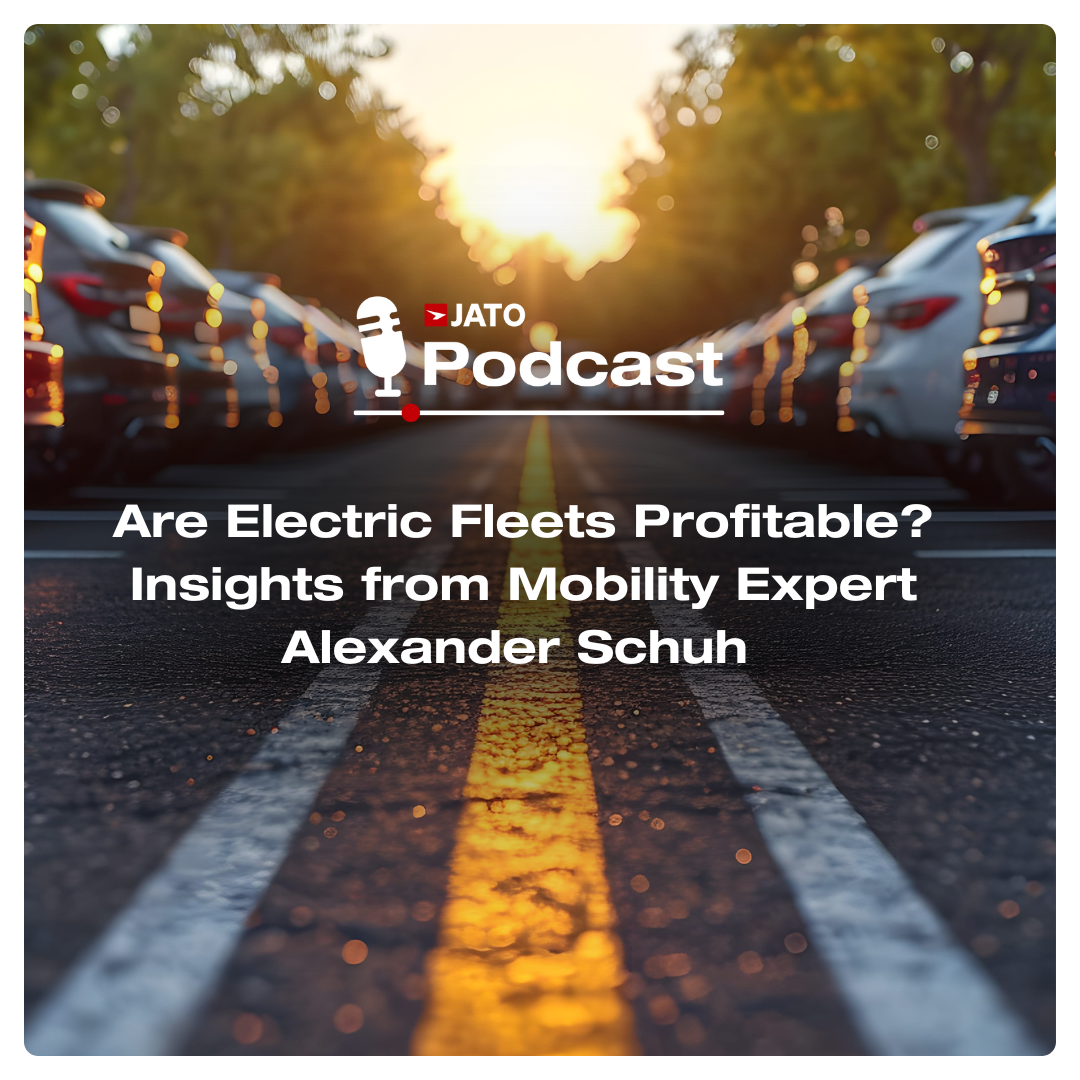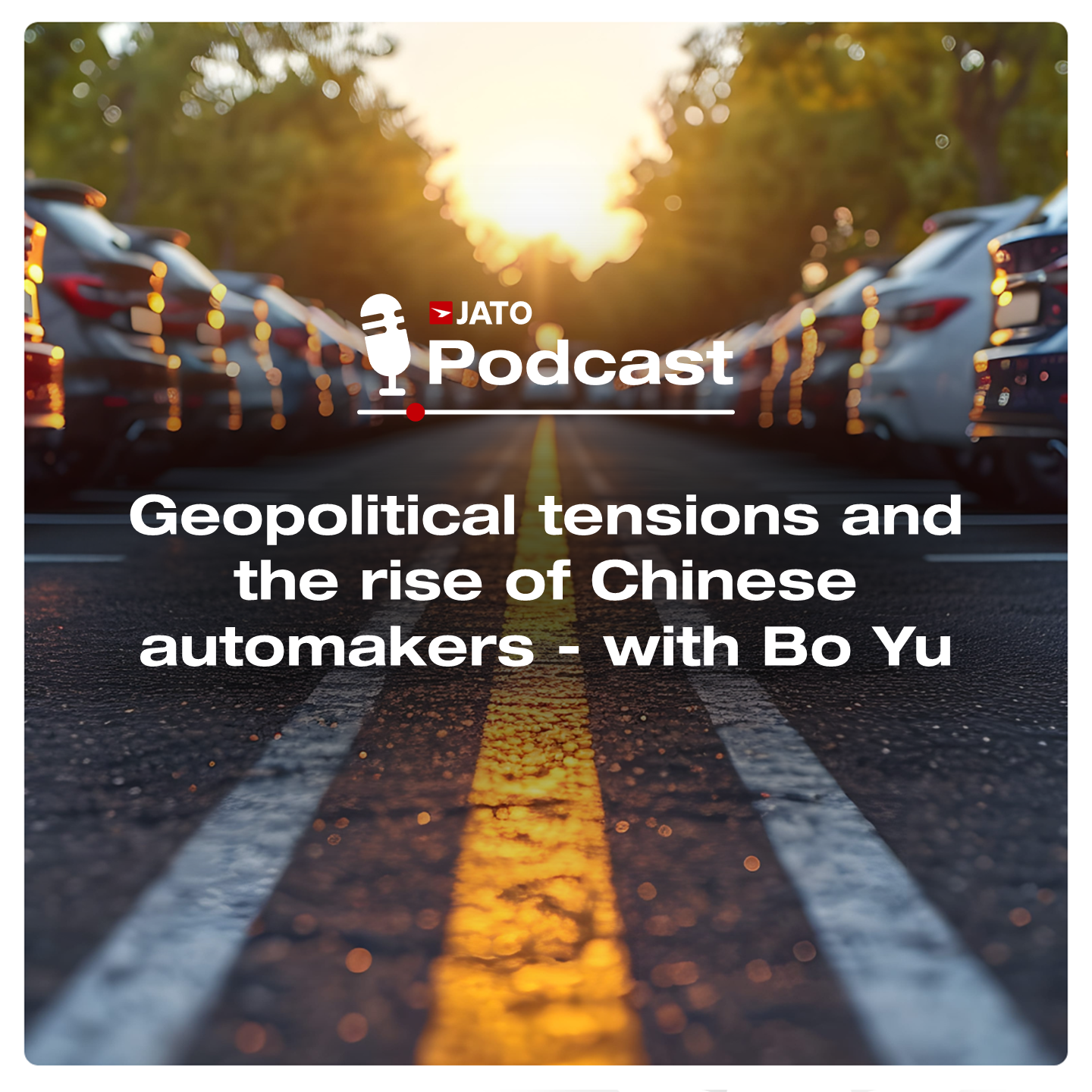Resources
Browse our latest news, opinions and resources, or find upcoming events to attend.
News and insights
24 April 2025
Explore JATO Advisory's analysis of automotive incentives across Europe's major markets in 2025, revealing how Germany and UK see rising discounts while Italy and France experience declines. Discover the strategic implications for OEMs navigating changing consumer preferences and market dynamics.
 By Alexandre Parente
By Alexandre Parente
22 April 2025
Discover strategies to overcome tariff challenges in the automotive leasing industry and ensure business success amid rising costs and market shifts.
 By Jesper Rolink
By Jesper Rolink
22 April 2025
AI is no longer a distant possibility; it’s an essential tool for dealerships aiming to thrive in a digital-first world.
 By Team JATO
By Team JATO
Reports and whitepapers
12 May 2025
Discover how JATO's comprehensive data, analysis, and solutions can help automotive businesses succeed, with a focus on Chinese cars entering the UK market.
 By Team JATO
By Team JATO
11 March 2025
In this report, uncover how and why prices have changed across Europe, and learn what strategies leasing companies could attempt to better navigate these shifts.
 By Team JATO
By Team JATO
22 January 2025
Explore the evolving automotive landscape with insights into battery electric vehicles, the global rise of EVs, Chinese OEMs, and the challenges of affordability in JATO’s report.
By Felipe Munoz
Media and press releases
22 April 2025
European BEV registrations hit record highs in March 2025, with Tesla leading despite a sales drop. Discover market trends and top-performing models.
 By Team JATO
By Team JATO
08 April 2025
While the 25% tariff has been applied broadly, carmakers will feel its impact in a variety of different ways. For example, in 2024, Detroit’s “Big Three” – General Motors, Ford, and Stellantis – sold approximately 1.85 million imported light vehicles in the US, accounting for 13% of their combined global sales.
By Felipe Munoz
24 March 2025
A total of 966,300 new passenger cars were registered in Europe last month, marking a decline of 3% compared to the corresponding month last year. According to JATO Dynamics data for 28 markets*, decreases in Germany, Italy, Belgium, the Netherlands, Switzerland and Ireland were the main drivers of this trend.
By Felipe Munoz
Webinars and podcasts
Mar 13, 2025 8:23:41 AM
In this episode of the JATO Podcast, Paul Hilton, Head of Retail at JATO, sits down with Matt Crowe, Senior Product Manager, and Neil Smith, consultant and leading expert in the automotive dealer market.
 By Team JATO
By Team JATO
Nov 18, 2024 12:01:24 PM
Explore the profitability of electric fleets with insights from mobility expert Alexander Schuh. Learn about the challenges, strategies, and opportunities in fleet electrification.
 By Team JATO
By Team JATO
Sep 17, 2024 10:55:44 AM
Bo Yu, an expert in the automotive industry, discusses the global rise of Chinese EVs and the challenges and opportunities for automakers in 2023. Discover the latest market dynamics and strategies.
 By Team JATO
By Team JATO
Newsletter
08 May 2025
Subscribe to JATO’s monthly Strategy & Innovation Newsletter, bringing the latest industry news round-up to your inbox.
 By Team JATO
By Team JATO
09 April 2025
Subscribe to JATO’s monthly Strategy & Innovation Newsletter, bringing the latest industry news round-up to your inbox.
 By Team JATO
By Team JATO
11 March 2025
Subscribe to JATO’s monthly Strategy & Innovation Newsletter, bringing the latest industry news round-up to your inbox.
 By Team JATO
By Team JATO
Our knowledge is your power. Connect with us.
Find out more about our specialist solutions for the automotive industry.

